When it came to imported electric guitars, it was all about Gibson or Fender until the 1970s. These guitars were far out of reach for most students, and in local music shops, almost all models were displayed behind showroom glass. Naturally, it was normal that you couldn’t just try them out casually.
At least up until the early 1980s, that was the way things were.
In the bigger music stores in Tokyo, you could find shops with more stock and you could try out their instruments. I still remember how if you showed up in a school uniform and asked to try out a guitar, the staff would watch your every move like a hawk.
After Fender Japan was founded in 1982, things gradually started to change. Students could finally get their hands on high-quality guitars. This wasn’t just guitars, but also effects pedals—several manufacturers started to gain traction little by little, and the range of available gear began to grow.
However, handmade and boutique effects pedals wouldn’t become part of the conversation until much later.
In terms of guitar magazines, there were two main pillars: Young Guitar and Guitar Magazine, the latter having launched in the 1980s. Young Guitar also covered folk guitars, while Guitar Magazine tended to feature articles aimed at intermediate and advanced players that were densely packed with small text.
Starting around 1983, Young Guitar shifted heavily toward heavy metal content, often putting shredding guitarists on the cover. Unlike today, it was always the new “guitar hero” who was being featured—those who had just released new albums or were touring Japan.
By the mid-80s, Fender Japan began actively releasing models equipped with humbuckers.
Their prices were reasonable and the Japan-made Squier guitars from the 1980s stood out. These Squiers were high in quality and were more than capable of serving as solid entry-level guitars.
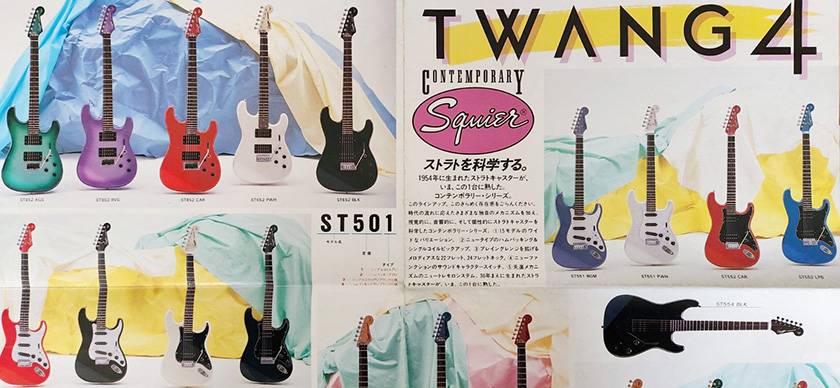
Fender Japan’s 1984 catalog featured a Squier Stratocaster in colors that just screamed the ‘80s.
Meanwhile, Fender released the Elite Series in the U.S. in 1983. It was also the time when CBS-era Fender prices peaked.
Especially the top-tier Elite models that came in aircraft-ready Voyager Cases, they felt totally out of reach and were practically designed for pros only.
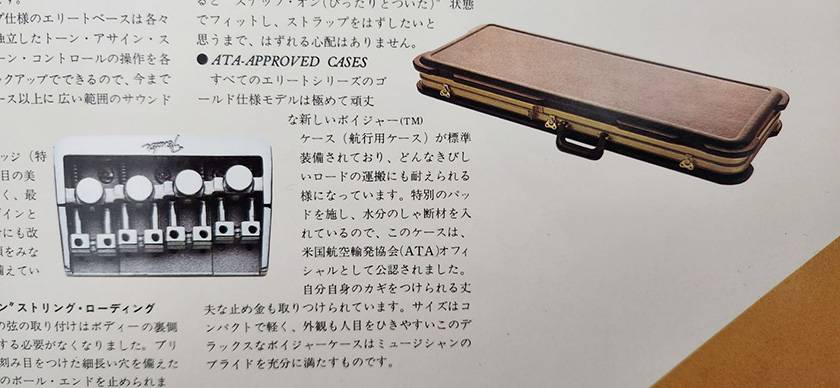
The Voyager Case that came with the high-end models of the Elite Series, I had never seen one, not even once, not on the street or in a music store. It was a flight case with butterfly latches, and just from the catalog photo, you could tell it was sturdier than the tweed cases that come with today's high-end models. (From the Elite Series catalog.)
Nowadays, the Masterbuilt class from Fender’s Custom Shop feels like something totally out of reach for the average player, but back then, CBS-era Fender kept rolling out changes in specs and prices that make you think, “Is this really necessary?!” Was I the only one who felt it was all just too much?
Anyway—
Before getting to the main story about the guitar, I laid out the historical context. And now, this is where the story of the 40,000-yen American-made Fender begins.
It was Spring, 1985 and it was exactly 40 years ago, but I still remember it clearly.
As usual, I dropped by my favorite music shop—a place that had about 50 guitars and basses on display and even had a studio attached. Every time I went, the staff would teach me something new.
I opened the glass door and immediately noticed three or four black hard cases casually standing against the left wall.
“Huh?” I thought. I asked Mr. N, a legendary staff member who would later be listed many times on the back cover of Guitar Magazine as a premium Gibson dealer.
He said, “American Fender guitars just came in—40,000 yen each.”
"Can I open it?"
I asked, and got the go-ahead—so I picked one of the cases to open.
The case was simpler than the molded ones Fender had used in the late '70s. The latches were molded plastic, which extended from the body of the case itself.
They reminded me of the latches on the BOSS compact pedalboard that held six pedals, which was made around the same time. (Back then, the latches weren’t as durable as they are now—these days they’ve been improved upon.)
“Whoa, this looks awesome!”
That was my first impression when I opened the case.
Inside was a sleek black-bodied guitar resting in a black case. The case was small, but surprisingly heavy when I lifted it.
The neck was maple. Small headstock. At a glance, the build quality seemed way beyond what you'd expect for the price.
“This is 40,000 yen? How?” I asked N.
He explained that there was a slight crack in the paint near the lower part of the body, so it couldn’t be sold as new. On top of that, it was a model that had been discontinued two years prior.
And, since I had only been playing guitar for about three years, there was no way I would’ve known what model it was.
“Can I hold it?”
I’m still that same cheeky student who has a thing for anything made in the USA.
I gave it a full once-over.
The look? Perfect.
Neck shape? No complaints.
Powerful.
Not bad at all—especially when playing chords, the tonal balance was great. I was playing pretty loud until the phone rang and they said:
“Hey, turn it down a bit!”
At first glance, it didn’t look too different from a Strat. Since it was in a black case, the body lines didn’t really stand out. It wasn’t as unique-looking as a Mustang and the headstock was the traditional small type—the kind that would later inspire the design of “The STRAT”.
The neck felt amazing in my hand, even for someone as inexperienced as me. It had a regular scale, and the frets were well set. I instantly knew this was Strat-level quality.
The wood grain was beautiful.
Birdseye maple, even. (Though I didn’t appreciate its value at the time.)
Let me say it again—40,000 yen.No consumption tax back then, but still not exactly cheap for a student. I thought it over for a while.
Inside a small compartmented container without a lid, there was an English user manual. It was larger than what you'd find with a Stratocaster. The gears in my brain turned: “If I were to buy a domestic electric guitar, this one’s clearly the better deal.”
It was technically an outlet item, sure—but I couldn’t resist. Most of all, for a high schooler, that iconic embossed logo— “FENDER MADE IN USA” big and bold on the case was pure aspiration.
“N-san, can you hold it for a week?”
He nodded.
I rushed home, pulled out my bankbook and every bit of cash I had from the drawer, and did the math.
I came up a little short.
I asked my mom to let me have next month’s allowance early, just enough to scrape by. But it was the beginning of the month…
So for the rest of that month, I had to bring lunch from home every day, cut out any social spending, and my financial record was practically a blank sheet.
Still, within a week, that guitar was mine.
The name of that guitar?
Fender LEAD I. Maple neck. Black body. Official price: 165,000 yen.
A genuine, no-doubt-about-it, made-in-USA Fender.
It was a mid-range electric guitar produced from 1979 and discontinued in 1983. Initially, the LEAD I and LEAD II were released, followed later by the LEAD III. The LEAD I had a single humbucker that could also function as a single coil. The LEAD II featured two single coils. The later LEAD III came equipped with two humbuckers.
Steve Morse was brought on as the first official endorser, and a photo of The Cars’ guitarist Elliot Easton playing on a custom LEAD II appeared in the 1982 catalog.
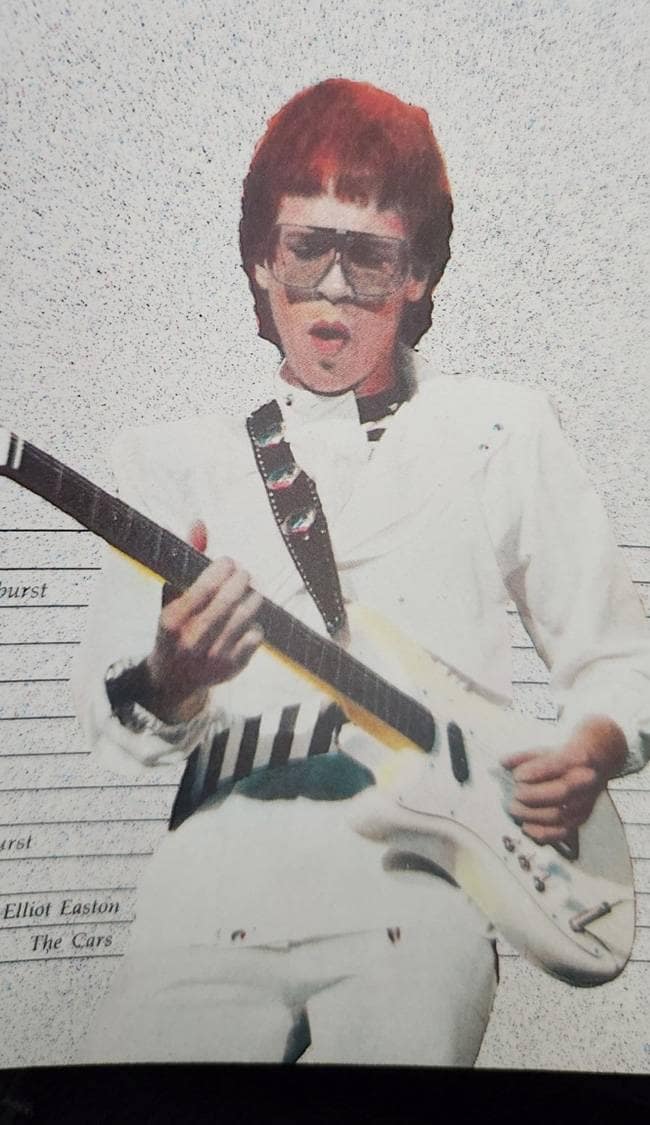
Elliot Easton of The Cars, who was active from the '70s into the '80s, was a known player of the LEAD II. The 1982 catalog features him with a custom model that included an extra switch and a matching headstock.
While it was designed as a mid-tier guitar, it’s clear the model was also developed with professional use in mind.
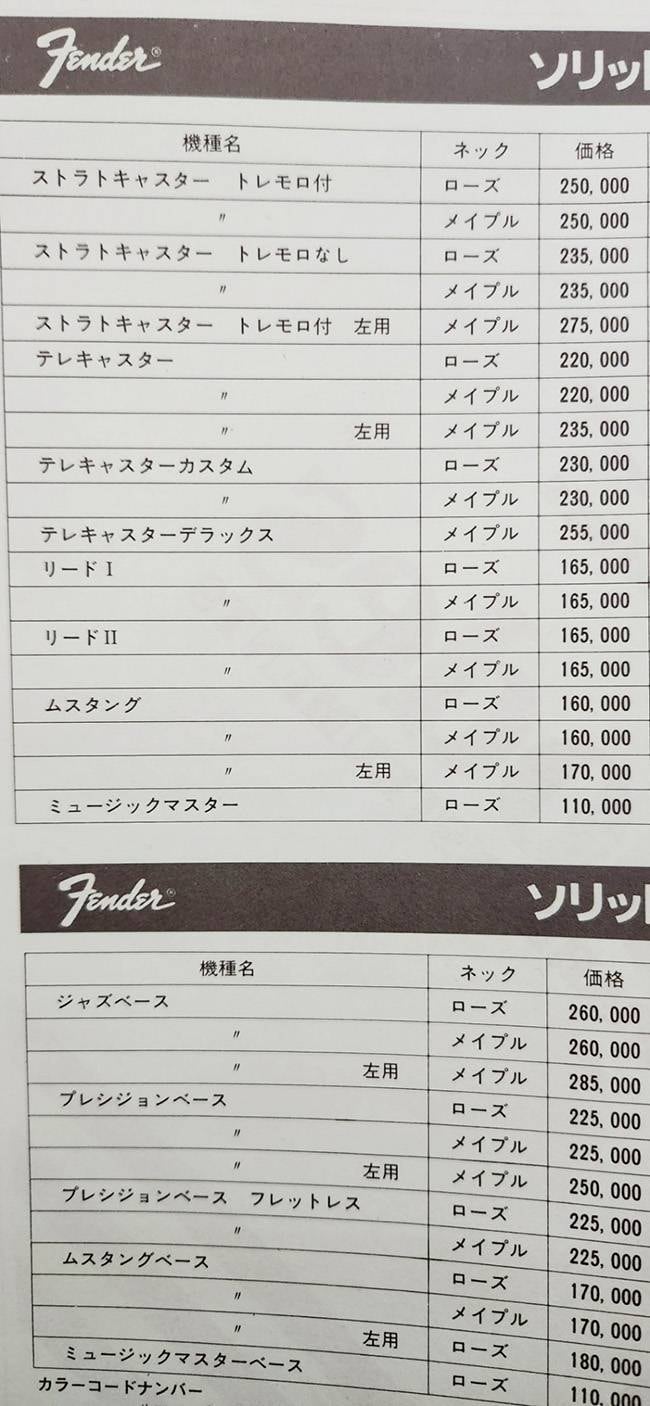
A price list shows the LEAD I listed at 165,000 yen as of October 1, 1981 (Showa 56).
The background behind its release was Fender’s intention to offer a high-quality guitar at a more affordable price than the Stratocaster or Telecaster.
At the time of its launch in 1979, models like the Elite Series or American Vintage Series hadn’t been released yet.
The electric guitar lineup in Japan then consisted of:
● Telecaster (Custom, Deluxe)
● Stratocaster
● Musicmaster
● Mustang
Looking at this lineup, it’s clear there was a need to develop a guitar better suited for rock music. As proof, the Fender advertisement featuring Steve Morse used the phrase “ROCK’N’ROLL” five times.
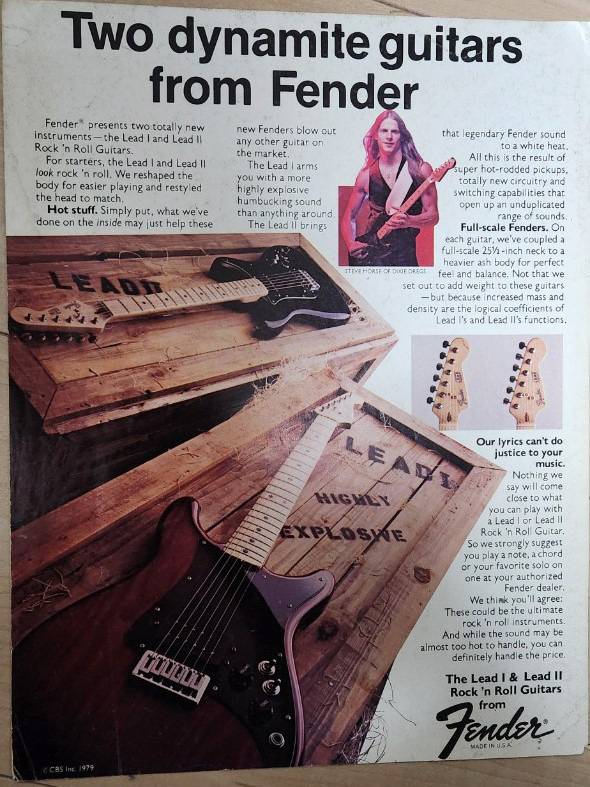
CBS Fender 1979 - LEAD1 & LEAD2 Release Advertisement. The guitarist featured in the ad is Steve Morse, who had been playing with Deep Purple for many years.
The LEAD series was one of CBS Fender’s responses as the music scene transitioned to rock music during this period.
Next time, we will take a dive into the specifics of the LEAD series, including its specifications, sound, and the LEAD3, which is also available at Sound House.
The column "sound & person" is built on contributions from readers like you.
For more details on submissions, please click here.





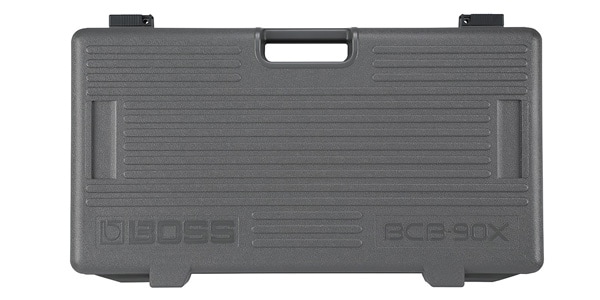







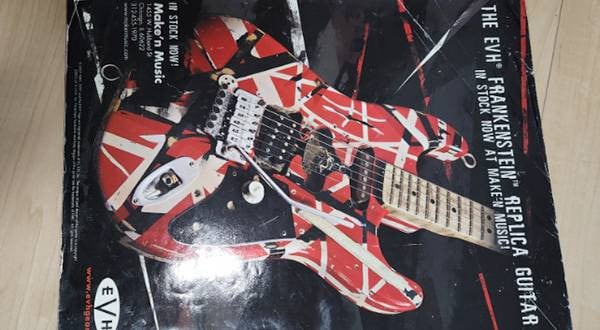
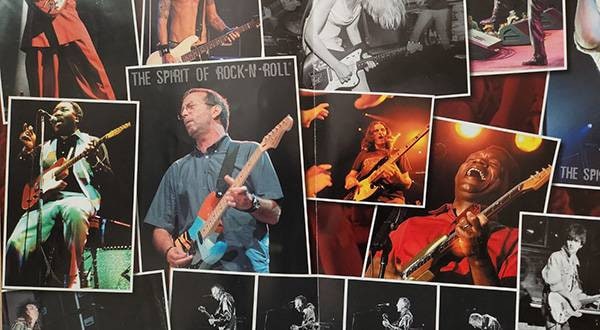

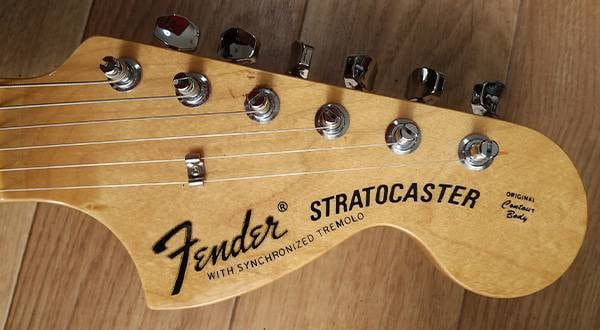

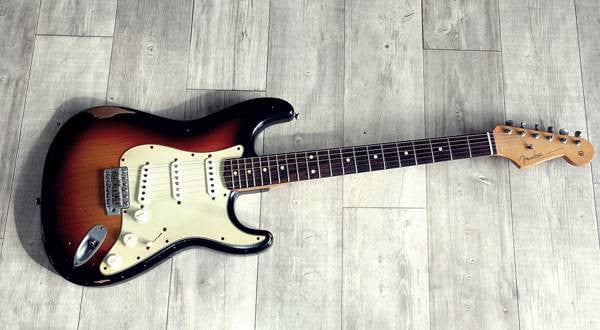
 FENDERフェンダーギターのおすすめと選び方
FENDERフェンダーギターのおすすめと選び方
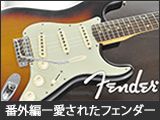 愛されたフェンダーギターたち
愛されたフェンダーギターたち
 ギターの種類
ギターの種類
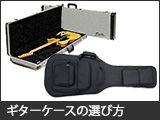 ギターケースの選び方
ギターケースの選び方
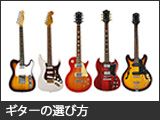 ギターの選び方
ギターの選び方















